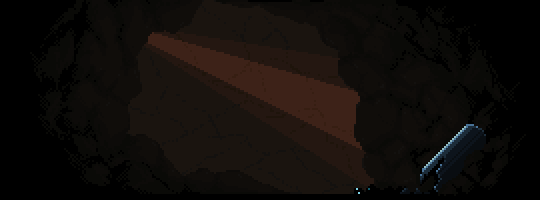Treatise: Translating the Avohkii
: Part 1 :
It has come to my attention that the novelization of the Mask of Light film includes the following passage:
mapaku una-kanokee wehnua-hakeeta ah-keelahe hanoni rahun-ahk toa-nak panokeeta makuta-tahkee ohnah-koo
This is supposed to be Nokama’s reading of the inscription found on the Avohkii. Interesting, no? Even if the novelization is only semi-canon, this could provide material for expanding our (admittedly completely made-up) knowledge of the Matoran language. Where to begin?
I began by seeking out the scene from the film itself where Nokama translates the inscription. I remember watching this years ago and hearing her utter some gibberish, but it never occurred to me that it might have been meaningful gibberish. Unfortunately for linguists attempting to reconstruct Matoran, the comparison of the film and the text from the novelization raises some problems. The bad news: The passages aren’t completely identical. The film-version is definitely truncated. The good news: While the film-version is shorter, it actually shares many elements with the novel-version. Both of these passages clearly come from the same source, and it appears that the film-version may be a pared-down form of the version presented in the book.
So which one do we use? Maybe we can use both. First off, however, we need a transcription of the passage from the film. Here’s mine:
ma'paku <break> [??] ke'wenuka'kit[?] <break> 'akila <break> [?]'hano <break> 'nano <break> 'atuana <break> ma'kuta'tak[?]
Notes:
- ' indicates stress on the following syllable. This won’t play a huge role, but it does help in determining some of the word breaks.
- <break> indicates a brief pause, which I take to indicate a word-break in most cases.
- ? in brackets [?] indicates an indistinct sound. The first [??] indicates that there may have been something within the break, but it was indecipherable.
If we compare this transcription with the text from the novelization, we can further refine the analysis to include the more well-motivated word-breaks:
mapaku [?]ke wenu-kakit[?] akila [?]hano nano atuana makuta tak[?]
I’ve put a dash between wenu and kakit[?] based on the orthography of the novel-version (wehnua-hakeeta). Likewise, for now I’ve kept [?]ke separate from wenu based on ...kanokee wehnua...
[Real world intrusion here—this strikes me as very Maori, and I would not be surprised if we were dealing with a non-phonetic version of Maori text in the novelization, with the actress who voiced Nokama in the film just reading it off the script phonetically (hence the extreme reduction). That doesn’t work for everything, of course, since the novel-version includes words that don’t seem likely to be completely lost through pure phonological reduction: rahun-akh, panokeeta, etc.]
Anyways, now that we’ve compared both versions a bit, the next question is: Which one is canon? As far as I know, the novelization is only semi-canon, while the film is full-canon, at least when it comes to events. It would be easy to just drop the novel-version, but then we’d lose a significant piece of potential data. Ideally, we should be able to come up with an analysis that accounts for and is informed by both.
So here’s the plan: I will start with the film-version, taking it at face value, rather than as a truncation of the “full” version in the novelization. If we can come up with a bare-bones translation for that, the translation of the novel-version should come easily. With that in mind, I’ll revise the transcription from the film:
mapaku ke whenu ka kitu akila ahano nano atuana makuta taka
Full disclosure: In anticipation of the final analysis below, I’ve filled in the [?]-gaps from the original in a way that I think is plausible (kit[?] > kitu, [?]hano > ahano, tak[?] > taka). I’ve also modified the spelling slightly (wenu > whenu). There is definitely some potential for error here, and there will be a few more modifications before we’re finished, but this should work for now.
Next step: What could this possibly mean? We never get a straightforward translation. Here’s what Nokama says after translating the passage (taken directly from MoL): “This is the great Kanohi Mask of Light. A mask to be worn by a seventh Toa...A Toa of Light.”
That’s pretty much it. Main points: The inscription may identify the mask as the Mask of Light, but then again, it may not, since the Turaga already knew what it was—they were the ones who hid it, after all. Likewise, the fact that it can only be worn by a “Seventh Toa” wouldn’t make a whole lot of sense in the inscription, since a seventh Toa isn’t all that special—there were hundreds (more on that later!). I think it’s likely that most of the dialogue related to the inscription was, in fact, theatrics. The Turaga simply revealed to the Matoran that the mask was the MoL and that there would be a “seventh” Toa—all of which the Turaga knew beforehand.
Instead, in attempting to translate this inscription, it may be more useful to look at the origins of the MoL itself. Who wrote this inscription and why? The MoL was made on Artakha, and it was created for the specific purpose of combatting the Brotherhood of Makuta should they ever leave the straight and narrow. Artakha himself may have been the one to write the inscription, but regardless, the mask had a purpose from the beginning, and it would make sense for the inscription to pertain to that purpose: If the Makuta ever go bad, take this mask and find an Av-Matoran. I think it makes sense, at least! But we won’t know until we’ve got a translation, will we? This post has set the stage for just such an endeavor...
Next time.
-
 6
6


5 Comments
Recommended Comments